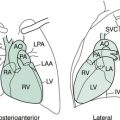Chapter 3 The short case
The short-case section of any postgraduate examination covers a number of systems (typically cardiovascular, respiratory, abdomen, neurological), and different countries’ learned colleges vary in their approach. In Australia, the individual FRACP short case tends to have a lead-in that is fairly broad, for example ‘Examine the gait’, and a comprehensive examination is expected. Each short-case examination lasts 15 minutes.
Proficiency in short cases, even more so than in long cases, is dependent upon months of practice, preferably on a daily basis, perfecting a coherent approach to every possible clinical problem likely to be presented. Several examination problems, such as short stature or precocious puberty, require a great deal of clinical material to be covered in 15 minutes, so a well prepared routine is essential. This book gives an outline of an approach to most of the commonly seen short-case topics.
Should you see a particularly confusing patient, and you are quite unable to work out their signs, do not bluff. It would be appropriate to admit that you find the signs confusing, but approach this methodically and logically. For example, if a child has a large array of heart murmurs, and the underlying diagnosis is completely unclear, it may be sensible to say, ‘This child has complex congenital heart disease, but I am uncertain as to the exact anatomical diagnosis. However, taking each murmur individually …’, and proceed to give a differential diagnosis for each murmur, mentioning that an electrocardiogram and a chest X-ray may clarify the diagnostic possibilities. You do not have to get the diagnosis absolutely correct to pass. Conversely, getting the diagnosis correct does not equal passing: if a child has an obvious aortic stenosis, missing neck auscultation for murmur radiation, and giving no thought to assessing the severity of the lesion, will not help you to pass.






